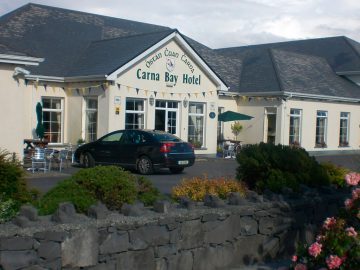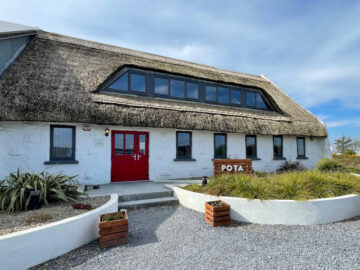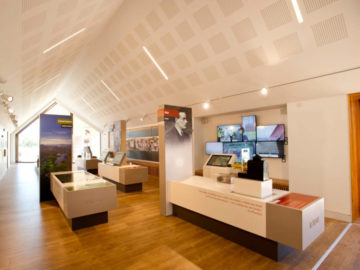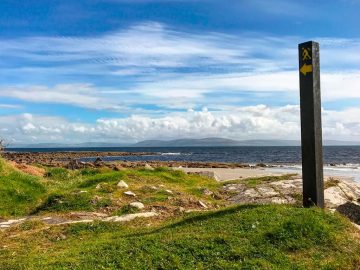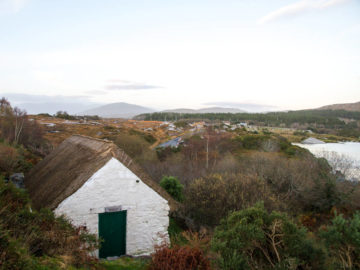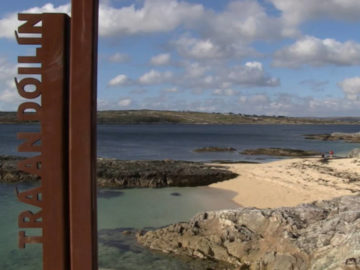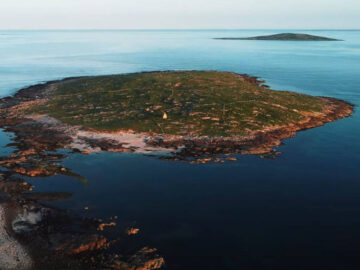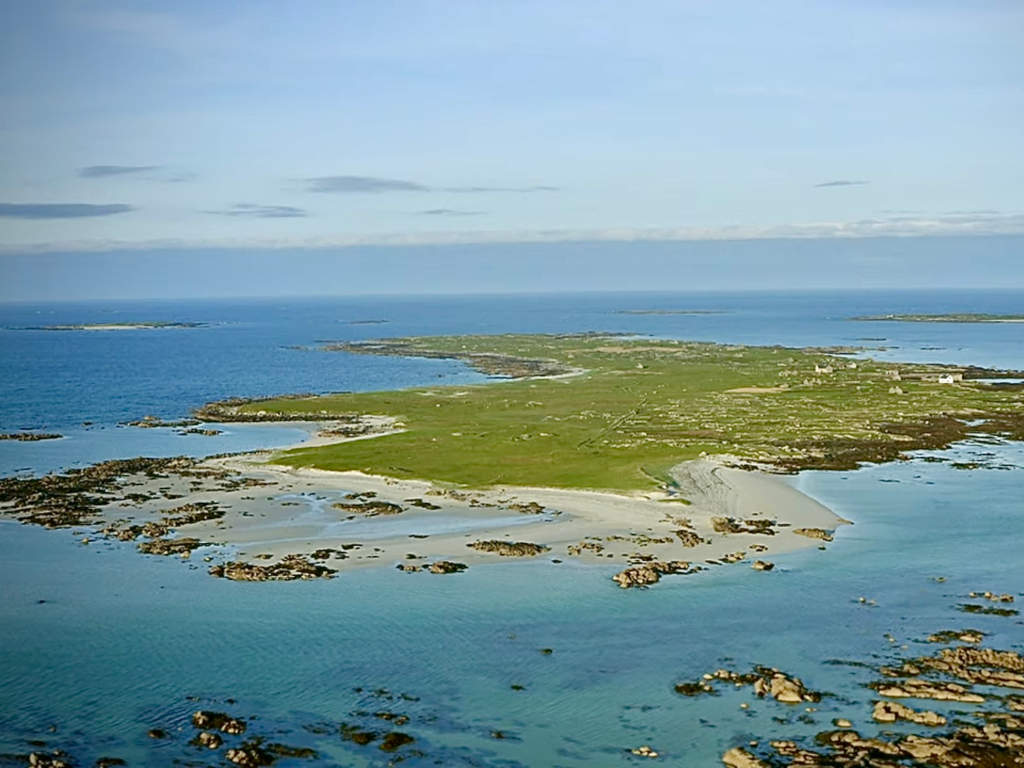
Finish Island
Finish (Feenish) Island: Journey to Connemara’s Forgotten Paradise
Nestled in the breathtaking landscape of south Connemara, just a short distance from the gaeltacht village of Carna, lies Finish (Feenish) Island, an enchanting destination waiting to be discovered. Though a couple of holiday homes now dot the island, and the occasional Galway Hooker sailing past, Feenish Island remains moored to its past, a place frozen in time.
Feenish Island’s natural allure is showcased through its crown jewel, its magnificent beaches that gracefully curve along its eastern shores. These coastal treasures boast dazzling white sand, where it meets the turquoise sea in a harmonious dance, all against a backdrop that seems to be plucked straight from one of Paul Henry’s celebrated paintings. The beaches of Feenish are unmatched in their splendor, casting a spell on all who visit. If you’re feeling adventurous, approach these pristine shores by kayak, embarking on a journey from the neighboring island of Birmore. As you paddle closer, a thin white line gradually expands into an awe-inspiring spectacle. Witness the teeming birdlife, the rhythmic breaking surf, and immerse yourself in the magic of this coastal paradise.
Discover Finish Island
Yet, Finish Island’s beauty comes with a bittersweet reality. The abundant sand and powerful Atlantic gales conspire to shape the destiny of this extraordinary place. The shifting sands slowly envelop many of the old ruins, their roofs adorned with patches of lichen, as they are partially submerged by the relentless march of time. Eventually, these remnants of a bygone era will succumb to the sands, vanishing completely, erasing all traces of the vibrant community that once thrived here. A similar fate awaits the former dwellings on Inishkea South in County Mayo, as nature’s identical process consumes their remains.
View this post on Instagram
While Feenish Island sits in close proximity to the mainland, its true neighbours lie farther out at sea. Apart from Birmore, the island is surrounded by the orchid-filled Inishmuskerry, Duck Island (known for a tragic boat sinking in 2005), and the former island of Mweenish, which now connects to the mainland through a series of causeways. To the east lies the mouth of Kilkieran Bay, a gateway leading to a multitude of other islands. Some of these islands were inhabited until as recently as the 1970s. In this district of the islands, known as Ceantar na nOileán, several landmasses are linked by causeways, creating a captivating interplay between land and sea. Today, most of Kilkieran Bay’s islands have been relinquished to the oystercatchers, existing as deserted remnants of a forgotten time.
Feenish Island’s rich history reveals traces of human presence dating back at least 7,000 years, harking back to the Mesolithic period. Shell middens, consisting of limpet, periwinkle, and oyster shells, serve as enduring testament to the island’s ancient inhabitants. Nestled near these kitchen middens, you’ll discover Tobar Cholmcille, a holy well among dozens that punctuate the stunning South Galway coast. Feenish Island once boasted a church and a national school, catering to the religious and educational needs of its community.
The island’s houses were a testament to the craftsmanship of their time. Constructed with stone, brick, or concrete walls, some featured roofs made of thatch, wood, or other perishable materials, while others showcased slate, iron, or tiled roofs. The names of the island’s inhabitants, including Conneely, Ridge, King, Mulkerrin, Nee, McDonagh, Mannion, and Madden, resonate with the echoes of generations past. The population reached its peak in 1841 with 66 individuals, but over time, Feenish Island’s allure waned, and the last resident bid farewell in 1987, leaving behind a void that resonates with both beauty and melancholy.
Adding to the island’s captivating narrative is the presence of a cilín, a poignant burial ground for children. This somber feature offers a glimpse into a microcosm of the nation’s history, revealing the profound stories etched into the soul of the Island.
Historically known by various names such as Fyenesh, Finshine, Island ffinish, and Fynish, Feenish Island harbours several interpretations of its meaning. Some suggest “fidh inis,” meaning “wood island,” while others propose “finnish,” denoting a “whitish rock.” Considering the island’s glistening sand, the latter interpretation seems more plausible, surpassing the absence of trees to showcase nature’s opulent beauty.
Feenish Island is undoubtedly a breathtaking destination, capturing the hearts of all who visit. Yet, its beauty is tinged with a sense of yearning, for this achingly beautiful place stands bereft of people.
How to get there:
To visit Feenish Island, timing is key. At low tide (check Galway tides), access is possible by approaching the left side of the island and strolling across the soft sand. This tidal window grants you at least two hours to wander through the island’s captivating sights, immersing yourself in its haunting tranquility.
Finish Island map
Finish Island Galway FAQs
Did anyone live on Finish Island?
Yes, to the south and west of the island there still exists the remnants of original stone homesteads, providing a glimpse into a bygone era. The remains of the now abandoned houses are gradually being covered with sand carried by westerly winds, trapped within crumbling stone walls.
What are the best attractions on Finish Island?
The island features several beaches, with the best one situated at the southern shore, offering an idyllic experience on a fine summer’s day.
What are the nearest villages to Feenish Island?
Finish Island is situated near to Carna Village on the mainland. 9 km north of Finish Island is the village of Letterard, which is part of the locality of Moyrus in Connemara, County Galway.
